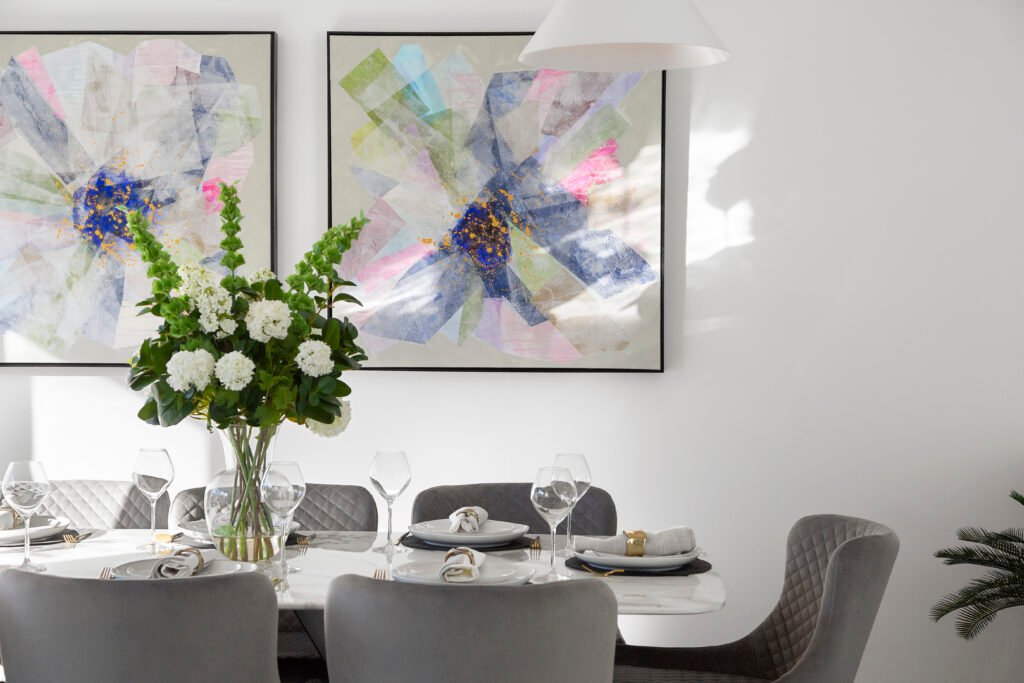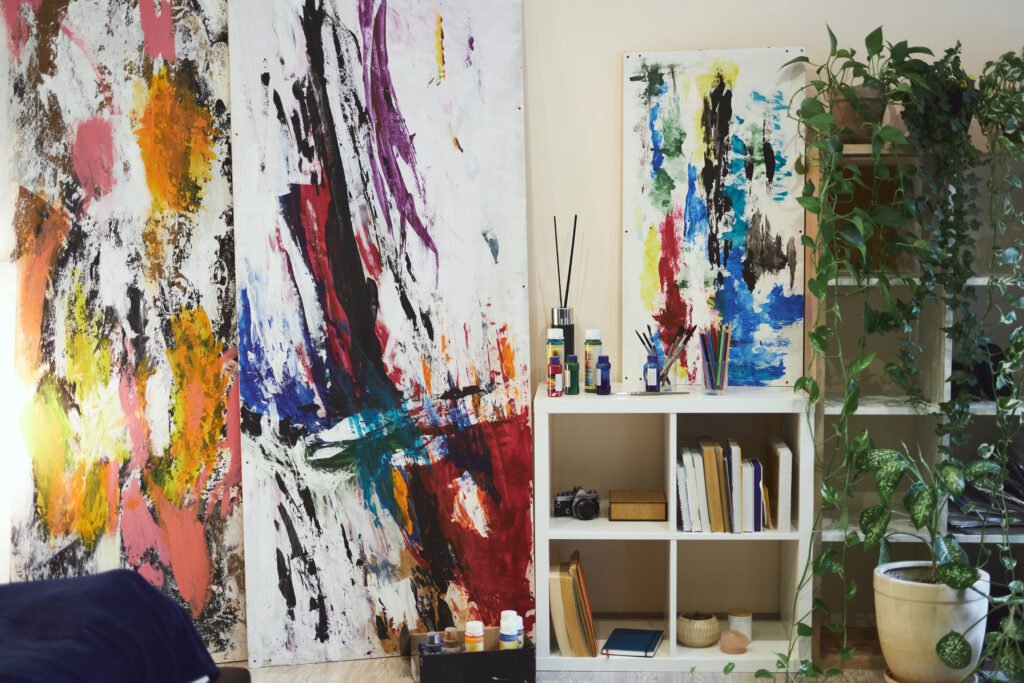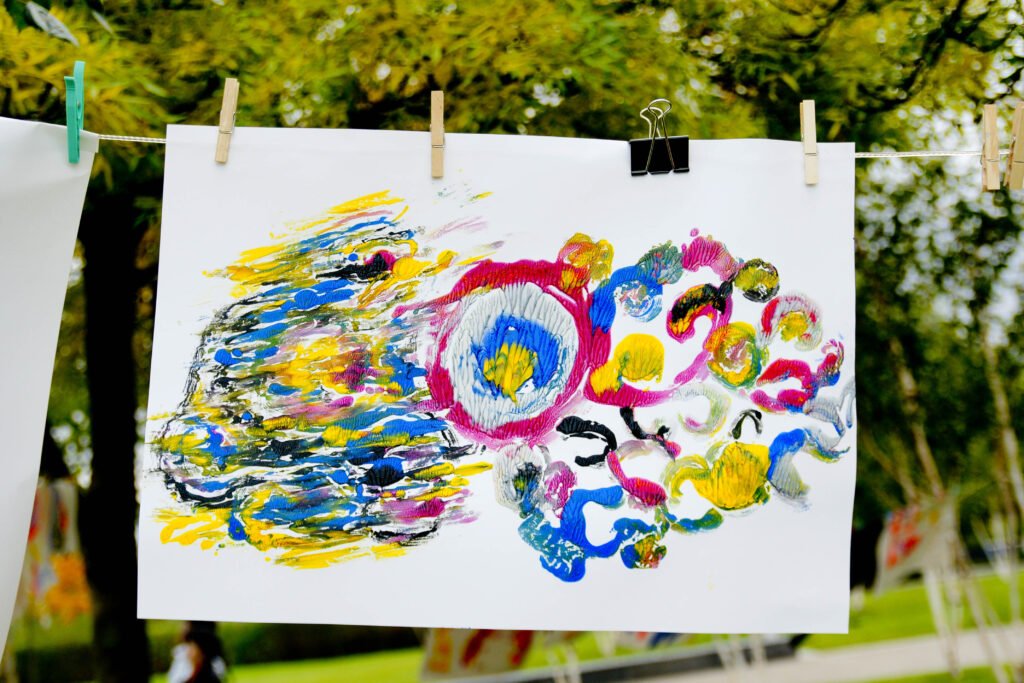Decorating with abstract art offers endless creative possibilities. With its nonfigurative shapes and varied palettes, this style allows environments to range from sophisticated minimalism to vibrant maximalism. The absence of literal representation opens the door to personal interpretations, making each piece a reflection of the identity and sensitivity of its owner.
When integrating abstract art into interior design, it can completely transform a space. More than just a decorative element, it becomes part of the home’s visual narrative, conveying emotion, history, and energy. As Wassily Kandinsky notes in Concerning the Spiritual in Art, “color is the key. The eye is the hammer. The soul is the piano with many strings.” Each work has the power to touch the emotional “instrument” of the viewer.
Understanding the Role of Abstract Art in Décor
Before choosing and applying a piece, it’s important to understand how abstract art interacts with a space. According to History of Modern Art by H. H. Arnason, the movement freed artists from the constraints of objective representation, allowing them to create works that speak directly to the senses.

This freedom translates into versatility in décor: a painting can be the focal point of a living room or a unifying element for textures and colors.
Museums like the MoMA and Tate Modern highlight the importance of abstract art in their collections, showing how it resonates with different spaces and eras. Drawing inspiration from these institutions is a great way to understand how colors, shapes, and compositions can coexist harmoniously.
Abstract art can also create intentional contrasts. A vibrant piece in a neutral room adds energy and dynamism, while a painting in soft tones brings calm to visually busy environments.
How to Choose and Place Abstract Art
Harmonizing décor with abstract art requires attention to details beyond personal taste. Essential tips include:
- Check the color palette: matching the artwork to the room’s colors creates unity; contrast can make it stand out.
- Mind the scale: large paintings become focal points, while smaller pieces work better in groups.
- Consider lighting: natural light enhances color nuances, while spotlights can create dramatic effects.
- Define a focal point: choose a wall or corner where the piece will take center stage.
- Invest wisely: when buying abstract art, opt for originals or limited editions to add cultural and aesthetic value.
A great example comes from the Centre Pompidou, which integrates abstract works into spacious, well-lit environments to highlight their presence and visual impact.
Integrating Abstract into Different Décor Styles
Each décor style interacts differently with abstract art:
- Minimalist: neutral colors and simple compositions prevent visual overload.
- Industrial: textured, colorful works contrast beautifully with concrete and metal.
- Classic: elegant frames and subdued colors preserve sophistication.
- Eclectic: total freedom to mix colors, sizes, and techniques.
In Interiors: The Greatest Rooms of the Century, Phaidon states that “harmony in a space does not come from uniformity, but from the dialogue between elements.”
Mixing furniture, rugs, and objects with abstract art can result in visually rich, balanced spaces.



